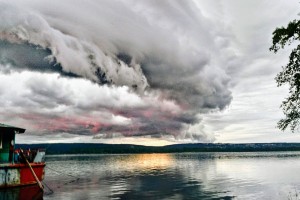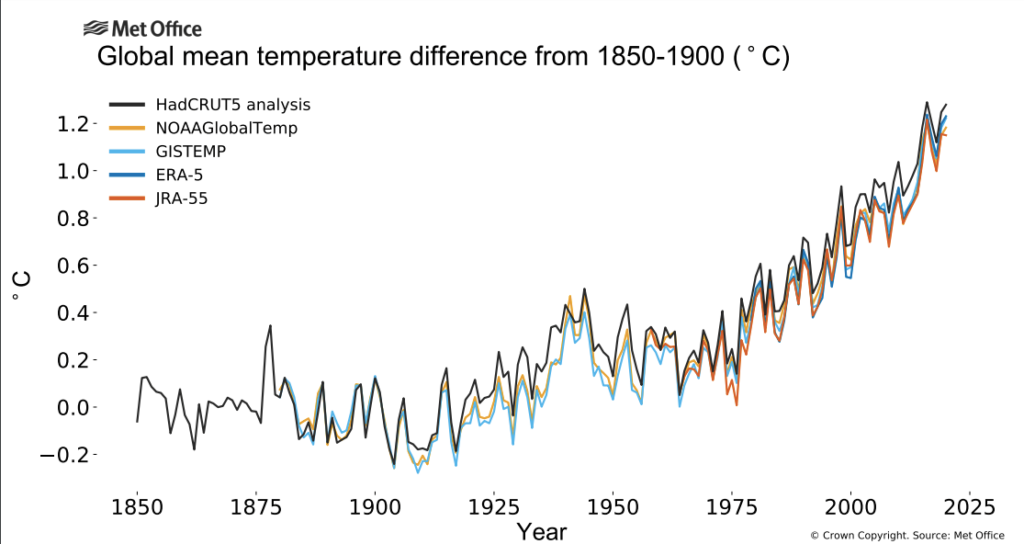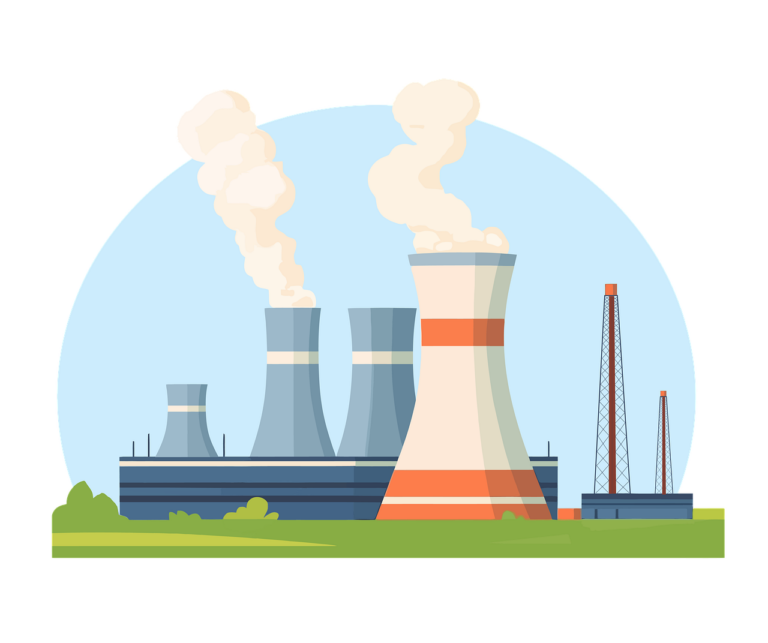
2020 was an unprecedented year of extreme weather, climate disasters and pandemic
New York/Geneva: -Cyclone Amphan which made landfall on May 20, 2020 near the India-Bangladesh border was the costliest tropical cyclone on record for the North Indian Ocean, with reported economic losses in India of approximately US$14 billion, a new report on the State of the Global Climate 2020, compiled by the World Meteorological Organization (WMO) and an extensive network of partners, has stated.
However, the strongest tropical cyclone of the season was Typhoon Goni (Rolly). It crossed the northern Philippines on November 1, 2020 with a 10-minute mean wind speed of 220 km/h (or higher) at its initial landfall, making it one of the most intense landfalls on record.
With 30 named storms, the 2020 North Atlantic hurricane season had its largest number of named storms on record. There were a record 12 landfalls in the United States of America, breaking the previous record of nine. Hurricane Laura reached category 4 intensity and made landfall on 27 August in western Louisiana, leading to extensive damage and US$ 19 billion in economic losses. Laura was also associated with extensive flood damage in Haiti and the Dominican Republic in its developing phase. The last storm of the season, Iota, was also the most intense, reaching category 5 before landfall in Central America.

2020 was an unprecedented year for people and planet: a global pandemic on a scale not seen for more than a century; global temperatures higher than in a millennium; and the highest concentration of carbon dioxide in our atmosphere for over 3 million years.
Extreme weather combined with COVID-19 in a double blow for millions of people in 2020. However, the pandemic-related economic slowdown failed to put a brake on climate change drivers and accelerating impacts.
“For many across the planet, especially in developing countries, 2020 was also a year of extreme weather and climate disruption, fuelled by anthropogenic climate change, affecting lives, destroying livelihoods and forcing many millions from their homes,” wrote António Guterres, United Nations Secretary-General in his foreword in the report which was released yesterday.
The report documents indicators of the climate system, including greenhouse gas concentrations, increasing land and ocean temperatures, sea level rise, melting ice and glacier retreat and extreme weather. It also highlights impacts on socio-economic development, migration and displacement, food security and land and marine ecosystems.

The report points out that while the warmest year on record to date was 2016, the warmth of 2020 was comparable to that of 2016. The year witnessed the largest fires ever recorded in the USA that occurred in late summer and autumn. Widespread drought contributed to the fires, and July to September 2020 were the hottest and driest on record for the southwest. Death Valley in California reached 54.4°C on August 16, 2020 – the highest known temperature in the world in at least the last 80 years. Australia broke heat records in early 2020, including the highest observed temperature in an Australian metropolitan area, in western Sydney, when Penrith reached 48.9°C.
The 2020 Arctic sea-ice extent minimum after the summer melt was 3.74 million km2, marking only the second time on record that it shrank to less than 4 million km2. Record low sea-ice extents were observed in the months of July and October. Record high temperatures north of the Arctic Circle in Siberia triggered an acceleration of sea-ice melt in the East Siberian and Laptev Seas, which saw a prolonged marine heatwave. The sea-ice retreat during the summer 2020 in the Laptev Sea was the earliest observed in the satellite era.
The Greenland ice sheet continued to lose mass. Although the surface mass balance was close to the long-term average, the loss of ice due to iceberg calving was at the high end of the 40-year satellite record. In total, approximately 152 Gt of ice were lost from the Greenland ice sheet between September 2019 and August 2020.
The ocean absorbs around 23% of the annual emissions of anthropogenic CO2 into the atmosphere and acts as a buffer against climate change. However, the CO2 reacts with seawater, lowering its pH and leading to ocean acidification. This in turn reduces its capacity to absorb CO2 from the atmosphere. Ocean acidification and deoxygenation have continued, impacting ecosystems, marine life and fisheries, according to Intergovernmental Oceanographic Commission of UNESCO (IOC-UNESCO).
The ocean also absorbs more than 90% of the excess heat from human activities. 2019 saw the highest ocean heat content on record, and this trend likely continued in 2020. The rate of ocean warming over the past decade was higher than the long-term average, indicating a continued uptake of heat trapped by greenhouse gases, according to the European Union’s Copernicus Marine Service.
Over 80% of the ocean area experienced at least one marine heatwave in 2020. The percentage of the ocean that experienced “strong” marine heat waves (45%) was greater than that which experienced “moderate” marine heat waves (28%).
Following are the other highlights of the report :
- 2020 was one of the three warmest years on record. The past six years, including 2020, have been the six warmest years on record. Temperatures reached 38.0 °C at Verkhoyansk, Russian Federation on 20 June, the highest recorded temperature anywhere north of the Arctic Circle.
- For Europe, 2020 was the warmest year on record.
- The trend in sea-level rise is accelerating. In addition, ocean heat storage and acidification are increasing, diminishing the ocean’s capacity to moderate climate change.
- The Arctic minimum sea-ice extent in September 2020 was the second lowest on record.
- The sea-ice retreat in the Laptev Sea was the earliest observed in the satellite era.
- The Antarctic mass loss trend accelerated around 2005, and currently, Antarctica loses approximately 175 to 225 Gt of ice per year.
- The 2020 North Atlantic hurricane season was exceptionally active. Hurricanes, extreme heatwaves, severe droughts and wildfires led to tens of billions of US dollars in economic losses and many deaths.
- Disruptions to the agriculture sector by COVID-19 exacerbated weather impacts along the entire food supply chain, elevating levels of food insecurity.
- Concentrations of the major greenhouse gases, CO2 , CH4 , and N2 O, continued to increase despite the temporary reduction in emissions in 2020 related to measures taken in response to COVID-19.
With 2020 being one of the three warmest years on record, the past six years, 2015–2020, were the six warmest on record. The last five-year (2016–2020) and 10-year (2011–2020) averages were also the warmest on record. Although the overall warmth of 2020 is clear, there were variations in temperature anomalies across the globe. While most land areas were warmer than the long-term average (1981–2010), one area in northern Eurasia stands out with temperatures of more than five degrees above average. Other notable areas of warmth included limited areas of the south-western United States, the northern and western parts of South America, parts of Central America, and wider areas of Eurasia, including parts of China. For Europe, 2020 was the warmest year on record. Areas of below-average temperatures on land included western Canada, limited areas of Brazil, northern India, and south-eastern Australia.
“It has been 28 years since the World Meteorological Organization issued the first state of the climate report in 1993, due to the concerns raised at that time about projected climate change. While understanding of the climate system and computing power have increased since then, the basic message remains the same and we now have 28 more years of data that show significant temperature increases over land and sea as well as other changes like sea level rise, melting of sea ice and glaciers and changes in precipitation patterns. This underscores the robustness of climate science based on the physical laws governing the behaviour of the climate system,” said WMO Secretary-General Prof. Petteri Taalas.
Guterres told a media persons in New York: “Now, our challenge is clear. To avert the worst impacts of climate change, science tells us that we must limit global temperature rise to within 1.5 degrees of the pre-industrial baseline. That means reducing global greenhouse gas emissions by 45 per cent from 2010 levels by 2030 and reaching net-zero emissions by 2050. We are way off track. This must be the year for action — the “make it or break it” year. There are a number of concrete advances I expect before COP26 in Glasgow this November.”
– global bihari bureau






Very informative article